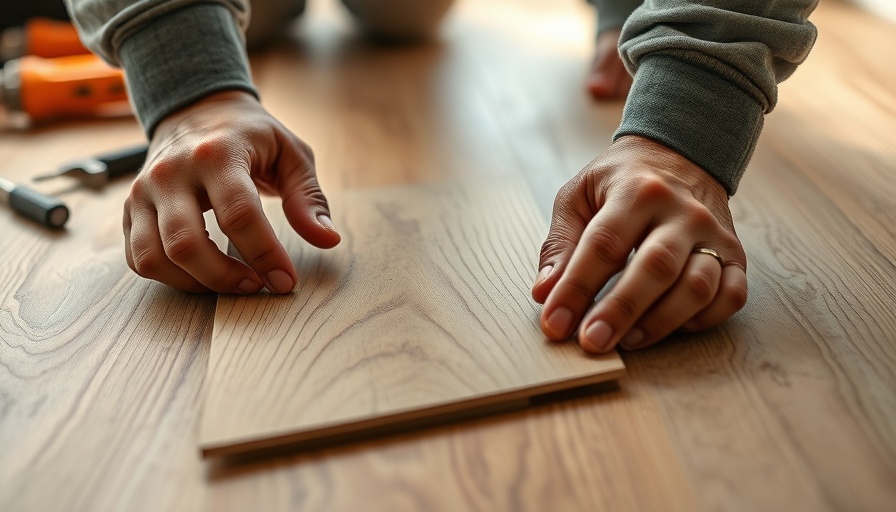
Transforming Your Outdoor Living Space: Choosing the Right Deck Material
Building a deck isn’t just about adding space; it’s about creating a welcoming area for gatherings and enhancing the beauty of your home. However, the first step in planning your dream deck is deciding on the right materials. Knowing the differences between decking options will help you create a space that suits your lifestyle while ensuring long-lasting quality.
Understanding the Options: Wood Vs. Composite Vs. PVC
When choosing decking materials, homeowners face a variety of options. Each has its unique benefits and drawbacks, making it crucial to match your choice to your specific needs.
Wood Decking: Classic Appeal with Maintenance Needs
Traditional wood decking, such as red cedar and redwood, offers a natural beauty that’s hard to replicate. These types of woods are rich in natural oils that confer resistance to rot and pests. However, wood deck owners must be prepared for regular maintenance—as the elements can wear down even the sturdiest wood.
For example, a redwood deck may require assessments for warping every couple of years and re-staining every two to five years. Failure to maintain your deck can rapidly decrease its lifespan and aesthetic appeal.
The Convenience of Composite Decking
If you want a beautiful deck without the extensive upkeep, composite decking is an excellent alternative. Manufactured from a blend of wood fibers and recycled plastics, composite decking not only combats rot, warping, and fading but also offers a diverse range of colors and styles. Homeowners looking for low-maintenance solutions will find composite decks ideal, as they only require periodic cleaning.
One downside, however, is that upper-end composite boards can be pricier initially, but they entail lower long-term maintenance costs—making them a smart investment for the future.
PVC Decking: The No-Maintenance Wonder
PVC (polyvinyl chloride) decking is another option worth considering, particularly for high-traffic areas. Fully synthetic, PVC decking boasts incredible durability and is impervious to rot and pests. Though it can be more expensive than wood, it’s nearly maintenance-free, only requiring a light wash to maintain its look each season.
However, some homeowners may find PVC lacking the authentic aesthetic of traditional wood, which could impact their home's visual cohesiveness. It can sometimes appear more artificial, thus requiring thoughtful consideration regarding your home’s overall design.
Factors to Consider When Choosing Materials
Beyond aesthetics and durability, there are several factors to contemplate as you decide on your decking material.
Climate and Environment
Your local climate plays a significant role in determining the best decking material. For instance, if you live in an area prone to heavy rain, opting for materials like PVC or composite can help mitigate water damage. In contrast, if you favor a traditional look and live in a relatively dry area, natural wood can provide that sought-after aesthetic.
Budget Considerations
Initial cost versus long-term value is another crucial component. Traditional wood may have the charm and lower initial outlay, but its upkeep can quickly escalate. In contrast, composite and PVC options might show a higher price tag upfront but save you time and money on maintenance in the long run.
Making Your Decision
In the end, the choice of decking material ultimately depends on personal preference, lifestyle, and willingness to maintain your outdoor space. Consider how you plan to use your deck:
- If you entertain frequently, opting for materials that withstand the elements while requiring minimal maintenance might be ideal.
- For those who desire traditional aesthetics with periodic care, natural wood could still be the choice.
- If eco-friendliness edge concerns you, consider composite materials with high recycled content.
Regardless of your choice, investing wisely in your deck adds beauty and functional space to your home, increasing not just your enjoyment but also your property’s value.
Take Action: Plan Your Next Steps Wisely!
Choosing the right decking material can feel daunting, but it doesn’t have to be. For personalized guidance and professional installation, contact a local expert who understands your area’s unique needs. Schedule a consultation today and take one step closer to transforming your outdoor living experience!
 Add Row
Add Row  Add
Add 




Write A Comment